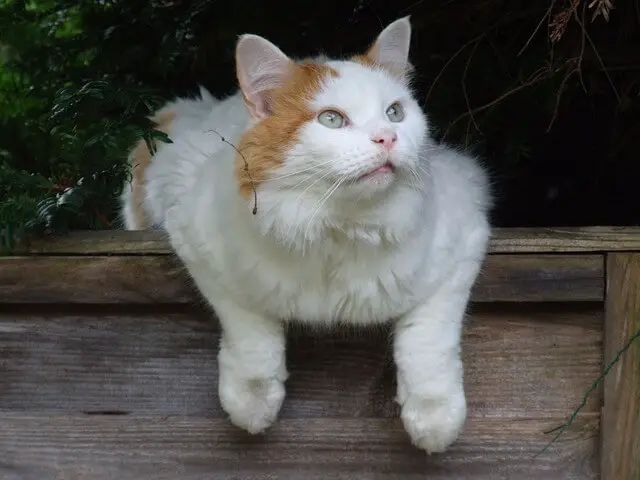
Turkish Van
If you love rare cat breeds, you might be interested in the Turkish Van. These cats are considered rare even in their native Turkey. If you take one look at them, you will realize how absolutely stunning they are. The Turkish Van (pronounced Von) has blue or amber eyes. It can even have one of each color. It has a soft fur that will make you want to cuddle with them the whole day. If you’re thinking of making them your roommates, here are a few things you should know about the Turkish Van.

Length:
14–17 in

Weight:
10-18 lb

Origin:
Lake Van, Turkey

Life Expectancy:
12-17 years
Breed History
There aren’t many cat breeds as ancient as the Turkish Van. While it may be unclear when precisely these cats made the Turkish region of Lake Van their home, there are drawings, jewelry, and carvings that place cats with similar characteristics there for nearly 5.000 years. During that time, the Van made remarkable adaptations with its coat.

Historians believe these cats arrived in Western Europe during the Crusades. Ancient warriors and knights took some of these cats with them upon their return. In 1955, Laura Lushington traveled to Turkey for an assignment from the Turkish Travel ministry. She was given an unrelated pair of Turkish Vans. The cats mated, and the offspring were identical to their parents. Lushington returned to Turkey to find another pair and established a breeding line. Pretty soon, this breed was recognized by the British cat fancy organizations.
Cat Breed Characteristics
One of the things that set the Turkish Van from all other cats is the unique characteristics they have. These cats developed and evolved with their environment, making them pretty unique in the feline kingdom. Here are some of the characteristics you can expect from your Turkish Van.
Coat
These cats are classified as longhaired, but the truth is that there are two variations of the coat. Through adaptation, the Turkish Van has two types of coats. During winters, these cats have thick, long coats that keep them warm and isolated from harsh weather. However, during the summer, when the temperature in Lake Van is warm, the cat sheds its long coat and grows a shorter, thinner fur.

Coat color
The first time you see a picture of a Turkish Van, or the cat (if you’re lucky), you might get the impression that this is a white cat. However, you would be wrong. Their coat color is determined by the piebald gene, which means they are colored cats with huge patches of white. Colors noticed in this breed are various shades of tortoiseshell, red, blue, tabby in red, cream, black, and brown and blue.
Size
The Turkish Van is a medium-large cat. When they reach maturity, they will most likely be 14 - 17 inches long and can reach a weight of 10 - 18 pounds. It is not the largest of felines, but it has respectable size.
Temperament
Another crucial thing future cat owners need to know about their Turkish Van is temperament. This kitty will require certain things, and you will have to learn how to handle them. Turkish Vans are intelligent, and they have a sense of humor. These cats can quickly get bored and look for ways to entertain themselves with destructive behavior. This cat loves pushing things off the counter, so make sure your valuables are not displayed and placed somewhere where they can easily be broken.

Health
No matter what type of cat you get, you should know there are specific health issues they are prone to. Selective breeding ensured these issues are as rare as possible, but they still exist. Some of the health issues Turkish Vans are prone to are;
- Hypertrophic cardiomyopathy - Thickening of the heart’s muscular walls and decreasing the heart’s efficiency.
World Cat Finder Team

Updated at20.12.2021.

Share